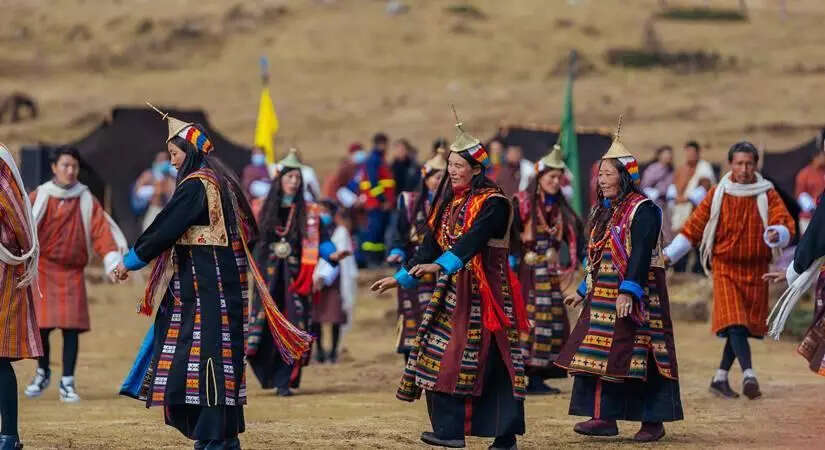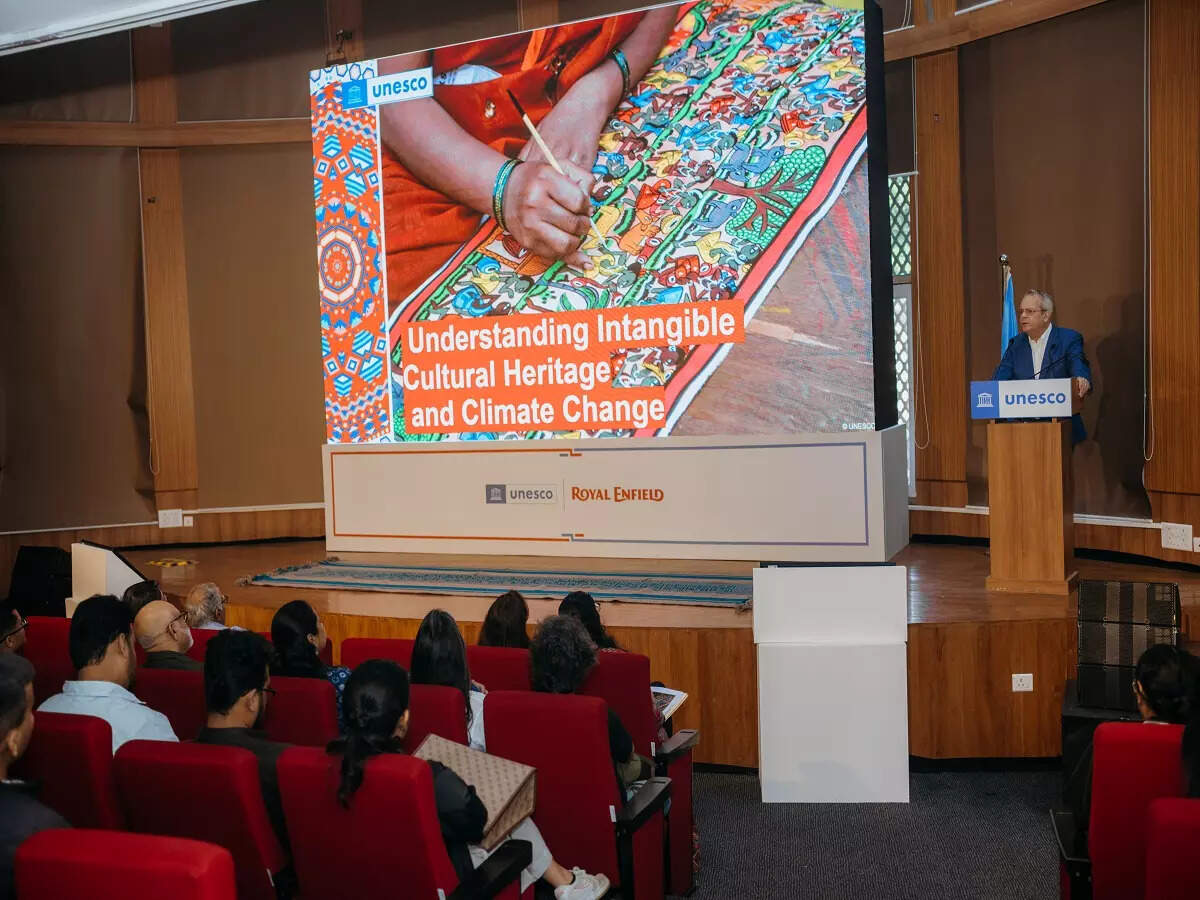
Although, Laya, a remote village in Bhutan has long been renowned for its pristine natural beauty and breathtaking mountain views, it was after the Bhutan King Jigme Khesar Namgyel Wangchuck initiated the Royal Highland Festival that the village got all the limelight, Bhutan Live reported.
Laya, is nestled at an elevation of 3,830 meters above sea level. The festival was designed to celebrate the village’s unique highland culture and stunning landscapes, and it has successfully drawn over 2,000 visitors to this secluded corner of Bhutan.
The Royal Highland Festival’s popularity has posed a significant challenge for Laya – how to manage the high influx of visitors while preserving the environment, culture, and well-being of its citizens.
The solution lies in the principles of ecotourism, which the Bhutanese government defines as responsible travel that aligns with Gross National Happiness and implements a “high-value low-volume” tourism policy, Bhutan Live reported.For achieving this, the Dzongkhag (district) and Gewog (block) administrations collaborate closely with the local community, giving them responsibilities and ownership throughout the preparation, during the festival, and after the festival. This approach allows Laya to maintain its pristine environment while benefiting from tourism.
The preparations for the Royal Highland Festival began on October 13 and continued until October 20. Each household was asked to provide a volunteer for two days, taking turns alternately.
The children, led by their teachers, went around the neighbourhoods with gunnysacks, collecting waste in the wake of the festival, showcasing the village’s commitment to cleanliness.
Moreover, Langothang, the festival ground, sees representatives from each household going up to dismantle tents and clean up the area after the festival concludes. De-suups, a volunteer organization in Bhutan, have also played their part by collecting trash from the festival ground and taking it down to Wangdue for proper disposal, Bhutan Live reported.
The community also manages homestay and porter businesses, sharing the benefits with community members. Seventy-four out of the 280 households in Laya open their doors to guests, providing a unique opportunity for both Bhutanese and international visitors to live with Layap households, learn about their daily lives, their culture, and share meals together like a family. The homestay rates are modest and fixed by committee members of dzongkhag and gewog to ensure fair pricing.
According to Bhutan Live, the importance of preserving the environment is not lost on the villagers. Laya’s mangmi, Pema Jamtsho, emphasized the need to maintain the pristine environment.
“Our land is undisturbed, and we must maintain our pristine environment at all times,” he said. “People are always more than willing participants in this initiative.”
The Royal Highland Festival is also an opportunity for many households in Laya to engage in brisk porter business. While the usual rate for porters is Nu 800 per horse, they charge Nu 600 for festival-related services, keeping the focus on providing a service to visitors rather than pursuing profit.
The festival not only celebrates Laya’s unique culture and natural beauty but also serves as a shining example of sustainable and responsible tourism, as per Bhutan Live
By actively involving the community, promoting cleanliness, and embracing principles of ecotourism, Laya continues to be a popular cultural and ecotourism hotspot while safeguarding its environment and cultural heritage.
As Bhutan’s Royal Highland Festival demonstrates, it is indeed possible to strike a harmonious balance between tourism and conservation, all while ensuring the well-being and happiness of its citizens, Bhutan Live reported.
[ad_2]
Source link

Following the success of its inaugural edition, UNESCO and Royal Enfield have announced the commencement of the Second Chapter of ‘The Great Himalayan Exploration’. This unique initiative is dedicated to the documentation and preservation of the Intangible Cultural Heritage of the Himalayan region. This endeavour seeks to raise awareness about the rich cultural traditions and heritage of India.
Last year more than 25 rider-researchers embarked on a transformative journey, documenting 21 distinct practices in various parts of Meghalaya, Assam, and Arunachal Pradesh. The Second Chapter of The Great Himalayan Exploration was unveiled in New Delhi with an exclusive exhibition titled ‘Journeying Across the Himalayas II’ at Bikaner House, showcasing the remarkable work of documenting these 21 practices.
This mission aims to collaborate with 100 communities to enhance resilience and inspire a movement of responsible travel practices among riders and travellers.
This session featured Tim Curtis, the recently-appointed Director and Representative of UNESCO New Delhi Regional Office for Bangladesh, Bhutan, India, the Maldives, Nepal, and Sri Lanka who talked about the importance of preserving the ‘living heritage’ and efforts taken by UNESCO towards the cause.
“As the world grapples with the effects of climate change, which include outmigration and forced displacement that threaten cultural identities, safeguarding Intangible Cultural Heritage becomes ever more urgent. Traditional knowledge and practices passed down through generations can offer vital solutions to mitigate the impact of climate change. In a country as vast and culturally diverse as India, this partnership between UNESCO and Royal Enfield aims to raise awareness and mobilise communities to safeguard living heritage. This partnership aligns with the goals of UNESCO’s 2003 Convention for The Safeguarding of Intangible Cultural Heritage, especially as the Convention celebrates its 20th anniversary this year.”
Bidisha Dey, Executive Director of Eicher Group Foundation, the CSR and Sustainability arm of Royal Enfield, stated, “This partnership with UNESCO allows us to deepen our relationship with the Himalayas and its communities, which have inspired Royal Enfield for decades. Through the process of engaging with the Intangible Cultural Heritage of the region, we have learned that sustainable living is at the heart of most of these practices. The Great Himalayan Exploration provides riders and travellers with a unique opportunity to combine purpose with their passion for exploration.”
The Second Chapter of The Great Himalayan Exploration will witness the participation of 60 motorcyclists, carefully selected from over 600 registrations. These rider-researchers will embark on a series of rides to remote Himalayan communities in small groups over the next six months, aiming to document over 50 Intangible Cultural Heritage practices.
On the sidelines of the exhibition, Curtis, in conversation with ETTravelWorld, also highlighted the importance of sustainable tourism management, addressing social, environmental, and heritage impacts.
“UNESCO has been working for 20 years to preserve intangible culture through programs, policies, and capacity building. We are working closely with Indian government to spread awareness about cultural heritage preservation. When it comes to sustainable tourism, UNESCO has programs looking at tourism management plans for World Heritage Sites to address over-tourism issues. Their goal is balancing tourism benefits with preventing harm to heritage sites. Proper planning, policies, and awareness can help manage tourism sustainably,” he mentioned.
Whereas, Bidisha Dey while interacting with ETTravelWorld, discussed about the organisation’s green pitstop project in Ladakh, which involves working with a community to create a sustainable tourism model and building trust through transparency and community involvement.
“This was our first green pitstop and now we have few more in the making. There’s certainly one coming up in Chuma Thang in Ladakh, hopefully one in Manas wildlife region of Assam, and maybe some other places as well,” he said.
Talking about Intangible Cultural Heritage project, she said, “More importantly, this is just the first leg of the project. We’ve identified 100 practices in the eastern Himalayas, we’re documenting them. We are also in the process of identifying another 100-odd practices in the western Himalayas across Ladakh and Jammu & Kashmir.”
[ad_2]
Source link




